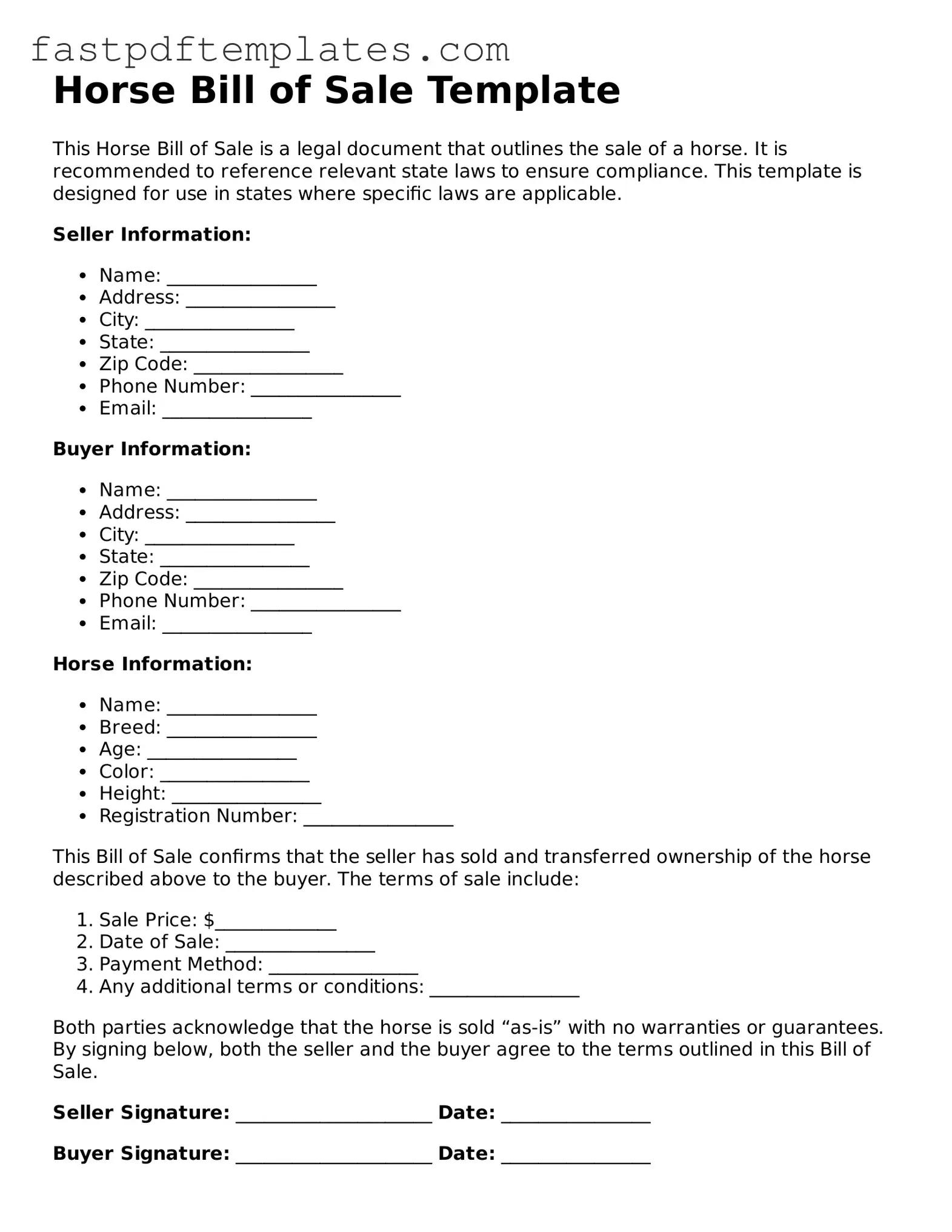The Horse Bill of Sale form is similar to a Vehicle Bill of Sale. Both documents serve to transfer ownership from one party to another. They include details such as the buyer's and seller's names, the description of the vehicle or horse, and the sale price. Just like a horse, a vehicle requires proper documentation to ensure that the new owner has legal rights over it. Both documents can also be used to protect the interests of both parties involved in the transaction.
Another document similar to the Horse Bill of Sale is the Boat Bill of Sale. This form is used when someone buys or sells a boat. It contains similar information, such as the buyer and seller's details, a description of the boat, and the sale price. Just as with horses, boats need proper documentation to prove ownership and facilitate the transfer of rights.
The Pet Bill of Sale is also comparable to the Horse Bill of Sale. When someone sells a pet, this document outlines the transfer of ownership. It includes the names of the buyer and seller, a description of the pet, and the sale price. Like horses, pets are considered personal property, and having a bill of sale helps clarify ownership and any agreements made during the sale.
The Equipment Bill of Sale shares similarities as well. This document is used when selling equipment, such as farming tools or machinery. It details the buyer and seller's information, a description of the equipment, and the agreed-upon price. Just like horses, equipment transactions require proper documentation to ensure both parties are protected and understand the terms of the sale.
A Real Estate Bill of Sale is another document that resembles the Horse Bill of Sale. While it primarily focuses on personal property within real estate transactions, it serves a similar purpose. It includes details about the buyer and seller, a description of the items being sold, and the price. This document helps clarify ownership and protects both parties in the transaction.
The Mobile Home Bill of Sale is also akin to the Horse Bill of Sale. This document is used when transferring ownership of a mobile home. It includes the buyer's and seller's names, a description of the mobile home, and the sale price. Like horses, mobile homes are significant investments, and having a clear bill of sale helps ensure a smooth transfer of ownership.
The Trailer Bill of Sale is another document that shares similarities. This form is used when selling a trailer, whether for hauling goods or recreational purposes. It contains details about the buyer and seller, a description of the trailer, and the sale price. Just as with horses, trailers require proper documentation to establish ownership and protect both parties involved in the sale.
A Firearm Bill of Sale is also comparable to the Horse Bill of Sale. This document is used for the transfer of ownership of firearms. It includes the names of the buyer and seller, a description of the firearm, and the sale price. Just like horses, firearms are considered personal property, and having a bill of sale helps ensure that the transaction is legal and documented properly.
Lastly, the RV Bill of Sale is similar in function. This document is used when someone buys or sells a recreational vehicle. It includes details about the buyer and seller, a description of the RV, and the sale price. Much like horses, RVs are valuable assets, and a bill of sale provides a clear record of the transaction, protecting both parties involved.
